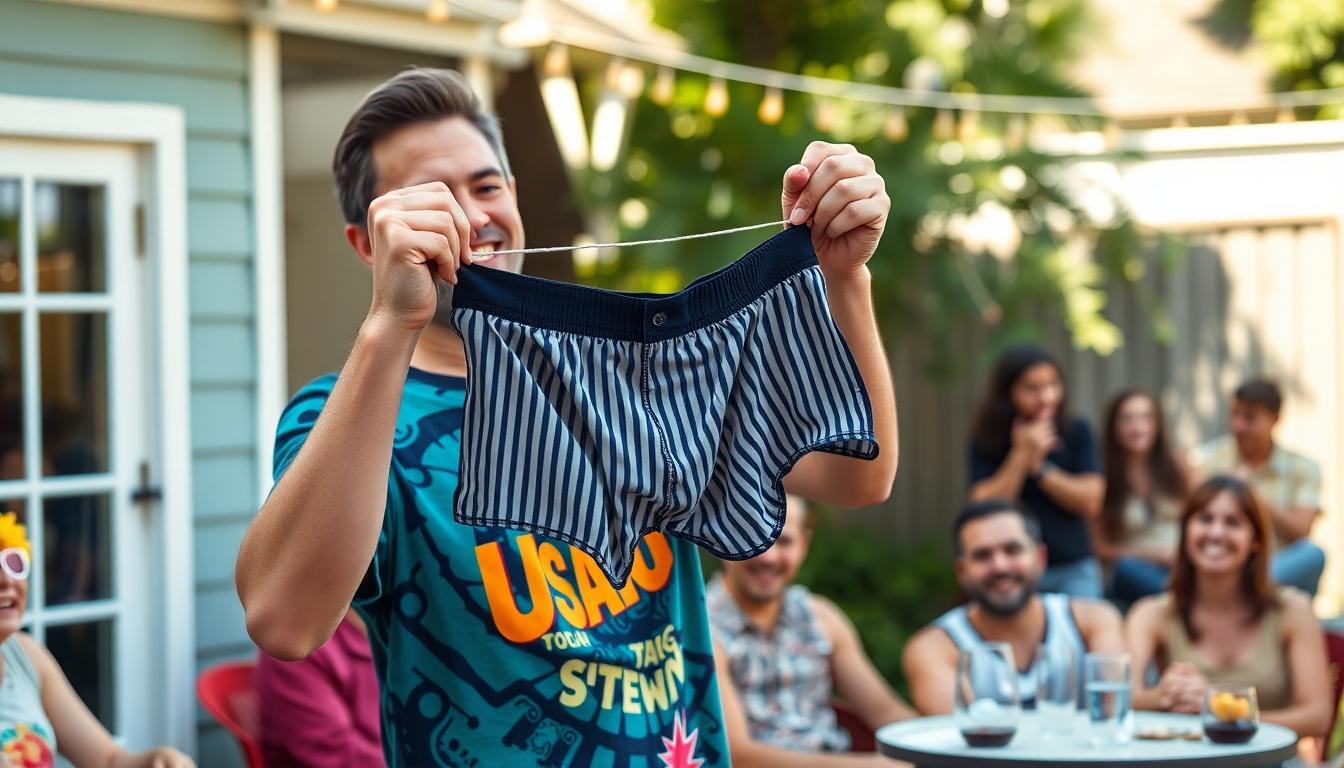Laughter is the universal language that connects us all, and nothing brings a smile to our faces quite like a good old-fashioned corny joke. We’ve all been there – rolling our eyes while simultaneously fighting back a chuckle at a punchline so predictable yet somehow still hilarious.
The Art of the Corny Joke: Why We Can’t Help But Laugh
Corny jokes possess a unique psychological appeal that transcends their obvious predictability. Our brains actually experience a small cognitive reward when we solve the simple puzzle of a punchline, releasing dopamine regardless of how groan-worthy the joke might be. This reaction explains why even the most obvious wordplay can trigger an involuntary smile.
Scientists have discovered that laughing at corny jokes creates social bonds through shared experiences. When a group collectively reacts to a particularly cheesy one-liner, they’re captivating in a form of communal recognition that strengthens relationships. Friends often develop inside jokes based on these silly exchanges, creating lasting connections through humor.
The accessibility of corny jokes makes them universally appealing across generations. Unlike complex humor that requires exact cultural knowledge or experiences, anyone can appreciate a simple pun about why the bicycle couldn’t stand up (because it was two-tired). This democratic quality allows grandparents, parents, and children to share in the same moment of levity.
Corny jokes also serve as perfect ice-breakers in awkward social situations. Their non-threatening nature makes them ideal conversation starters, helping ease tension in new environments. Many successful public speakers intentionally incorporate these lighthearted quips to establish rapport with audiences before delivering more substantial content.
The nostalgia factor plays a important role in our appreciation for these simple jokes. Many remind us of childhood moments when we first encountered them, creating an emotional connection that transcends the actual humor content. This nostalgic element explains why parents eagerly share the same jokes they heard decades earlier with their own children.
10 Dad-Approved Corny Jokes That Will Make You Groan

Research shows that corny jokes, particularly “dad jokes,” create social bonds through their predictable punchlines and innocent humor. Studies indicate that parents who use humor report stronger bonds with their children, suggesting these groan-inducing quips actually foster positive family dynamics.
Food Puns That Are Hard to Digest
Food-themed corny jokes consistently rank among the most shareable dad jokes, combining our love for eating with wordplay. “I told a pizza joke—it was too cheesy” represents the classic formula that makes these jokes work so well. The predictable punchlines of food puns trigger the brain’s temporal lobe, which processes the incongruity essential to humor appreciation. When sharing these jokes, many people find that even when the punchline is obvious, the collective groaning creates a shared experience that strengthens social connections. Try serving up these food-related zingers at your next family gathering:
- What do you call a fake noodle? An impasta!
- What’s a baker’s favorite tree? A pastry!
- Why couldn’t the sesame seed leave the casino? It was on a roll!
- How does a taco say grace? Lettuce pray!
- What did the grape say when it got stepped on? Nothing, it just let out a little wine!
Animal Jokes That Are Truly Wild
- What do you call a bear with no socks? Barefoot!
- How do you organize a space party? You planet!
- What’s a frog’s favorite type of shoes? Open toad sandals!
- Why are fish so smart? Because they live in schools!
- How do snails fight? They slug it out!
8 Corny One-Liners Perfect for Breaking the Ice

When awkward silences strike, nothing cuts through tension better than a perfectly timed corny joke. These short, predictable punchlines might make people groan, but they’ll also create instant connections.
Quick Comebacks for Any Occasion
Looking for the perfect line to lighten the mood? These corny one-liners work in virtually any social setting:
- Why did the scarecrow win an award? Because he was outstanding in his field.
- Why don’t eggs tell jokes? They’d crack each other up.
- Why did the tomato turn red? Because it saw the salad dressing.
- What do you call a fake noodle? An impasta.
These quick-fire jokes don’t require elaborate setups, making them perfect for breaking awkward silences at parties, meetings, or first dates. Their universal appeal comes from simple wordplay that everyone can appreciate without needing specialized knowledge.
Short and Sweet Zingers
The beauty of these zingers lies in their brevity and unexpected punchlines:
- Why did the bicycle fall over? Because it was two-tired.
- I told my wife she was drawing her eyebrows too high. She looked surprised.
- Why don’t lobsters share? Because they’re shellfish.
- What do you call a bear with no socks on? Barefoot.
Science enthusiasts might also enjoy specialized puns like “Why did the scientist take out his doorbell? He wanted to win the no-bell prize” or “Why did the mushroom get invited to all the parties? Because he’s a fun-gi.” These short quips serve as perfect conversation starters in professional settings while showcasing your playful side.
7 Workplace-Friendly Corny Jokes to Share at the Office

Looking to lighten the mood at work? These corny jokes are perfect for bringing some laughter to your professional environment without crossing any lines. Research shows that simple humor can improve workplace morale and foster collaboration among team members.
- Computer Relaxation Time
“Why did the computer sit on the couch?”
“It needed to unwind.”
This tech joke works perfectly in office settings where computer fatigue is a shared experience among colleagues.
- Skeleton Staff Meeting
“Why don’t skeletons fight?”
“They don’t have the guts.”
Share this one during high-stress periods when your team could use a reminder to keep conflicts at bay.
- Digital Forest Connection
“How does a tree get online?”
“It logs in.”
Perfect for breaking tension during IT issues or when someone’s struggling with their login credentials.
- Management Excellence
“Why did the scarecrow become a successful manager?”
“He was outstanding in his field.”
Use this joke during team meetings or when recognizing someone’s professional achievements.
- Transportation Troubles
“Why couldn’t the bike stand up?”
“It was two-tired.”
Great for Monday mornings when everyone’s feeling a bit exhausted after the weekend.
- Sweet Dental Humor
“What kind of bear has no teeth?”
“A gummy bear.”
This universally appealing joke works well during coffee breaks or when sharing snacks with coworkers.
- Scientific Trust Issues
“Why don’t scientists trust atoms?”
“Because they make up everything.”
Perfect for knowledge-based workplaces or when dealing with complex problems that need a moment of levity.
These workplace-appropriate jokes rely on simple wordplay that’s accessible to everyone without risking offense. Their predictable nature makes them universally appealing while creating moments of shared laughter that can strengthen team bonds. Studies indicate that incorporating such lighthearted humor into daily workplace interactions can ease tension and promote a more collaborative environment.
9 Corny Science Jokes That Only Nerds Will Truly Appreciate

Science humor has a special place in the hearts of lab coat enthusiasts and periodic table memorizers everywhere. These jokes combine intellectual concepts with unexpected punchlines that’ll make you simultaneously groan and smile. We’ve compiled nine science jokes guaranteed to earn eye-rolls from friends but secret appreciation from fellow nerds.
- Why can you never trust atoms?
They make up everything! This classic science pun plays on the dual meaning of “make up” – atoms literally constitute all matter while the joke implies they’re dishonest. The simplicity of this molecular wordplay makes it perfect for breaking the ice at science conferences.
- What do you call a bunch of iron atoms at a carnival?
A ferrous wheel! This clever joke combines the chemical term “ferrous” (relating to iron) with the familiar fairground ride. Chemistry enthusiasts particularly enjoy this wordplay that transforms an ordinary amusement park attraction into an elemental pun.
- Why did the scientist take up gardening?
They heard it was a matter of growth! Scientific curiosity extends beyond the lab in this biology-themed joke. The punchline cleverly references both personal development and cellular biology, appealing to those who appreciate multidimensional wordplay.
- What did the femur say to the patella?
I knee’d you! Anatomy jokes require exact knowledge that makes them especially satisfying for medical students and healthcare professionals. This bone-tickling pun combines anatomical terminology with a common expression of dependence.
- Why did the germ cross the microscope?
To get to the other slide! This microbiology spin on the classic chicken joke will resonate with anyone who’s spent hours peering through microscopes. Lab technicians particularly appreciate this humorous take on their daily routine.
- What do you call a type of fish made of two sodium atoms?
2 Na! This joke requires understanding chemical symbols – Na is sodium on the periodic table – while “2 Na” sounds like “tuna” when pronounced aloud. The layered joke rewards those with both chemistry knowledge and an ear for phonetic wordplay.
- What did the photon say to the hotel clerk?
No, I’m traveling light! Physics humor shines in this pun about the elementary particle of light. The joke plays on the dual meaning of “traveling light” – both moving at the speed of light and packing minimally – creating a perfectly nerdy physics punchline.
- Why is the ocean so salty?
The land never waves back! This earth science joke anthropomorphizes geographical features to create an unexpected emotional narrative. The punchline suggests the ocean’s saltiness comes from tears of rejection, adding a touch of melancholy to this geological joke.
- What did the science book say to the math book?
You’ve got problems! This meta-academic joke personifies textbooks while playing on the double meaning of “problems” – both mathematical exercises and personal difficulties. Students who’ve struggled through both subjects will find this particularly relatable.
Science jokes provide a unique way for technically minded people to express their humor while celebrating their specialized knowledge. Sharing these jokes creates instant bonds among those who understand the underlying concepts, forming a sort of intellectual inside joke that strengthens community among science enthusiasts.
6 Holiday-Themed Corny Jokes for Every Season

Christmas Classics
Christmas delivers some of the most memorable corny jokes that bring families together during the festive season. “What do you call a snowman with a six-pack? An abdominal snowman!” This clever wordplay transforms the familiar “abominable snowman” into something unexpectedly fitness-related. Santa-themed humor also dominates holiday gatherings, with jokes like “Why did Santa go to music school? To improve his ‘wrap’ skills!” playing on the dual meaning of gift wrapping and musical rapping. Even Christmas trees aren’t safe from the pun treatment: “Why did the Christmas tree go to the barber? It needed a trim!”
Winter Wonderland Wordplay
Winter weather creates the perfect backdrop for icy humor that works throughout the colder months. “What’s a snowman’s favorite drink? Ice tea!” This simple joke relies on the obvious connection between snowmen and cold beverages, making it accessible for all ages. These winter jokes work particularly well during family gatherings where simple, clean humor brings everyone together around seasonal themes.
Elf Entertainment
Holiday helper elves provide rich material for festive jokes that delight children and adults alike. “What do elves learn in school? The elf-abet!” This play on “alphabet” represents the classic structure of holiday wordplay, incorporating seasonal characters into everyday concepts. Elfin humor tends to be especially popular with younger audiences while still making parents smirk at their deliberate corniness.
Reindeer Ridiculousness
Reindeer jokes fly high during holiday seasons, delivering predictable yet satisfying punchlines. “What do you call a reindeer that tells jokes? A funny deer!” This straightforward pun transforms “reindeer” into “funny deer,” exemplifying how holiday jokes often rely on simple word substitutions. These jokes work wonderfully as stocking stuffers or written inside holiday cards to spread cheer.
Seasonal Structure
Holiday corny jokes follow predictable patterns that make them instantly recognizable and shareable. Most rely heavily on homophones like the “wrap/rap” wordplay in Santa jokes, creating that characteristic groan-inducing reaction. Others use literal interpretations of figurative expressions, such as the “abdominal snowman” joke that reimagines a mythical creature in an unexpected context.
Family-Friendly Format
The universal appeal of holiday corny jokes stems from their accessibility across generations. Designed specifically for family gatherings, these jokes avoid complex humor or inappropriate content, focusing instead on simple wordplay that everyone from grandparents to young children can appreciate. Their deliberate corniness serves as a comedic strategy that emphasizes inclusive fun over sophisticated humor, making holiday celebrations more memorable through shared laughter.
How to Deliver Corny Jokes Like a Pro

Structure and Attitude
Mastering the delivery of corny jokes starts with understanding their foundation. These jokes rely on predictable yet playful setups typically featuring puns and wordplay, paired with exaggerated confidence. We recommend using a conversational tone during the setup phase to engage your audience naturally. When you reach the punchline, emphasize it with a slight pause or physical gesture for maximum impact. Props can significantly enhance your delivery—imagine holding up a pair of boxers when delivering a laundry-related pun. Your attitude plays a crucial role too, whether you choose deadpan sincerity or cheerful enthusiasm, as it creates a delightful contrast with the joke’s inherent cheesiness.
Timing and Pacing
Timing transforms an average corny joke into comedy gold. Inserting a strategic pause before the punchline builds anticipation and heightens the comedic effect. For example, saying “I thought it was a… brief affair” with that perfectly timed pause makes all the difference. Varying your pacing also enhances delivery—speed up during the setup to create urgency and interest, then deliberately slow down for the punchline to maximize its impact. This rhythm change signals to listeners that something funny is coming, preparing them for the groan-worthy moment.
Avoid Overexplaining
Never sabotage your corny jokes with phrases like “This is going to be hilarious” or follow-up explanations. Let your humor stand independently without commentary or apologies. Prefacing jokes undermines the element of surprise, which remains essential even in predictable corny jokes. Confidence in delivery shows you trust the joke’s inherent humor, regardless of how cheesy it might be.
Audience Engagement
Reading your audience’s reactions allows you to adjust your delivery in real time. Watch for smiles, groans, or eye rolls to gauge how your joke landed. Prolonged eye contact after delivering a particularly groan-worthy pun can actually heighten the comedic tension. We find that leaning into audience reactions, whether they’re laughing or playfully groaning, acknowledges the shared experience of corny humor and strengthens your connection with listeners.
Example Delivery
Consider this classic corny joke with proper delivery techniques:
Setup: “Why does laundry take so long?”
(Use a genuinely curious tone, as if asking a legitimate question)
Punchline: (Hold up a pair of boxers while delivering) “I thought it was a brief affair.”
(Emphasis on “brief” with a slight pause beforehand)
The perfect corny joke delivery embraces the inherent silliness while maintaining deliberate timing and audience awareness. When we deliver these jokes with confidence rather than apologizing for their cheesiness, we transform simple wordplay into memorable moments of shared laughter.
Why Corny Jokes Are Actually Good for Your Mental Health

Physiological Benefits That Boost Your Wellbeing
Corny jokes trigger laughter that releases endorphins, those natural chemicals in your brain that reduce pain and increase pleasure. Research shows these feel-good chemicals create a natural high that improves your overall mood. Your body also responds to laughter by lowering stress hormones like cortisol and epinephrine, promoting a state of relaxation similar to a mini-meditation session. Even brief moments of laughter activate mirror neurons in your brain, creating shared social connections that effectively combat feelings of isolation or loneliness.
Psychological and Social Advantages You Can’t Ignore
Humor helps reframe stressful situations, making life’s challenges feel significantly less overwhelming. Multiple studies link regular laughter to reduced symptoms of anxiety and depression, while simultaneously improving resilience in the face of adversity. Corny jokes, with their predictable punchlines and low-stakes humor, foster group bonding through shared amusement—whether that’s an eye roll or genuine laughter. The simplicity of these jokes makes them accessible to everyone, creating inclusive social experiences that strengthen relationships. Also, this type of humor effectively diffuses tension, helping us process difficult emotions without avoiding them.
Cognitive and Emotional Resilience Benefits
Research associates regular exposure to humor with improved memory, enhanced creativity, and better problem-solving skills. Corny jokes offer accessible moments of levity that help individuals regain emotional balance during stressful periods. Their simplicity allows our brains to experience a quick cognitive reward without requiring important mental effort. This type of humor supports long-term resilience by encouraging a lighter perspective on life’s challenges, which correlates directly with better mental health outcomes over time. We find that incorporating these simple jokes into daily routines provides consistent opportunities for emotional regulation and stress relief.
The Best Responses When Someone Tells You a Truly Terrible Corny Joke
Corny jokes may make us groan but they’re truly part of what makes life sweet. Whether you’re sharing puns at the dinner table strengthening family bonds or lightening the mood at work these simple jokes create meaningful connections.
We’ve seen how these seemingly silly one-liners trigger real psychological benefits releasing stress-busting endorphins and creating shared moments of joy. So next time someone drops a cheesy punchline don’t hold back your laughter or your groan.
Embrace the corniness! These jokes remind us that sometimes the simplest humor brings the greatest connection. So keep collecting those dad jokes food puns and holiday zingers – they’re doing more good than you realize with every smile they create.
Frequently Asked Questions
Why do corny jokes make us laugh even when they’re predictable?
Our brains receive a small cognitive reward when we solve the simple puzzle of a punchline, releasing dopamine regardless of how groan-worthy the joke may be. This creates a pleasant sensation that triggers laughter, even when we can predict the outcome. The simplicity and accessibility of corny jokes make them universally appealing across different age groups.
How do corny jokes help strengthen family bonds?
Research shows that parents who use humor report stronger bonds with their children. Corny jokes create shared experiences and collective reactions that foster social connections. They serve as a common language that bridges generational gaps, allowing families to enjoy the same humor together. These simple jokes also evoke nostalgia and create lasting memories that strengthen emotional ties.
Are corny jokes appropriate for professional settings?
Yes, workplace-friendly corny jokes can lighten the mood without crossing professional boundaries. Simple wordplay jokes like “Why did the computer sit on the couch? It needed to unwind” can improve workplace morale and foster collaboration. These jokes create moments of shared laughter that strengthen team bonds and help break down social barriers in professional environments.
What makes science-themed corny jokes effective?
Science jokes combine intellectual concepts with unexpected punchlines, creating an instant bond among those with technical knowledge. Examples like “Why can you never trust atoms? They make up everything!” celebrate specialized knowledge and form a sense of community among science enthusiasts. These jokes provide a playful way to engage with complex concepts while fostering connections.
How do holiday-themed corny jokes enhance celebrations?
Holiday jokes bring families together during festive seasons through accessible humor that avoids complexity. Examples like “Why did Santa go to music school? To improve his ‘wrap’ skills!” rely on clever wordplay that appeals to all ages. These jokes enhance the joy of shared laughter during celebrations and create inclusive fun that everyone can participate in.
What’s the best way to deliver a corny joke effectively?
Deliver corny jokes with a conversational tone and exaggerated confidence. Use strategic pauses before punchlines to build anticipation, and avoid overexplaining the joke afterward. Timing and pacing are crucial—allow a beat after the setup before delivering the punchline. Engage with your audience and gauge their reactions to adjust your delivery style accordingly.
What are the mental health benefits of sharing corny jokes?
Laughter from corny jokes triggers endorphin release, improving mood and reducing stress hormones. The physiological benefits include lower blood pressure and muscle relaxation. Psychologically, humor helps reframe stressful situations and promotes resilience. Regular exposure to humor is linked to improved memory, creativity, and emotional regulation, making corny jokes valuable tools for mental wellbeing.







